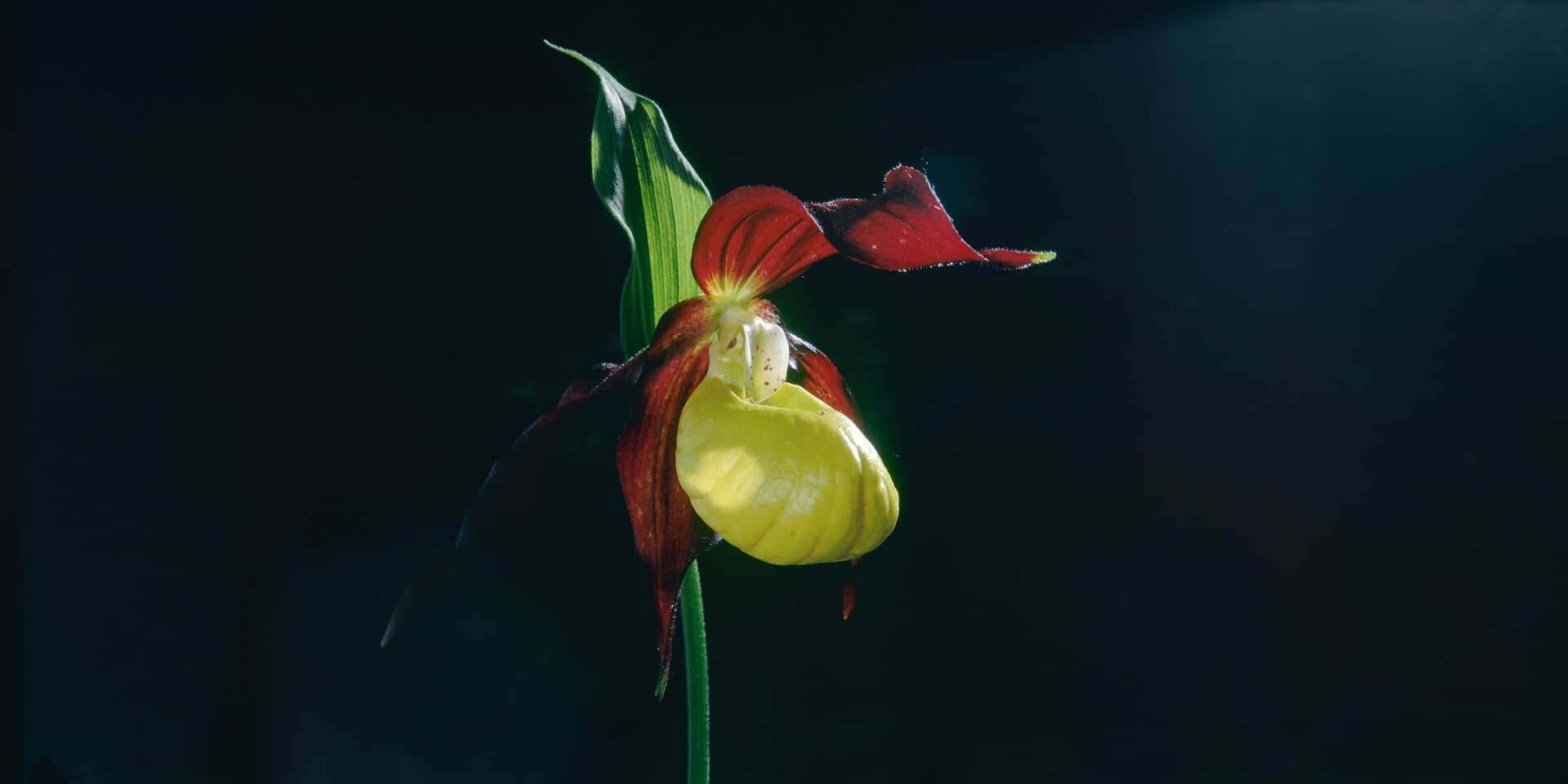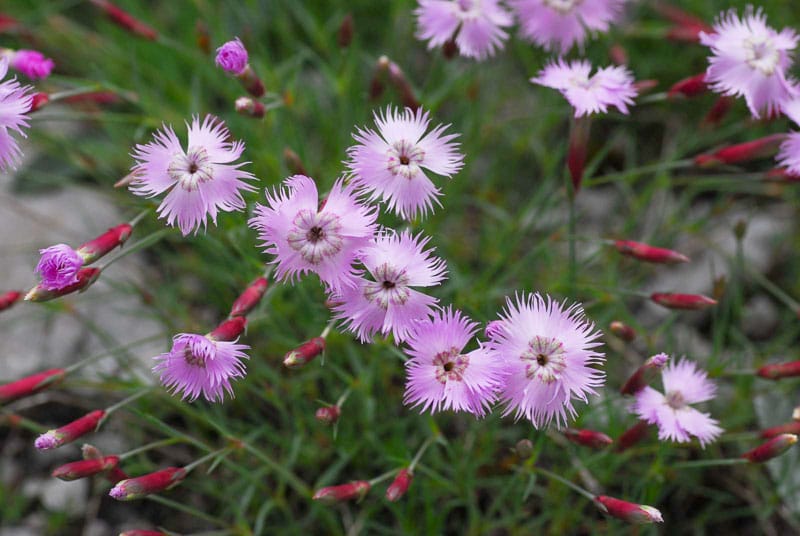


Numerous special plant species inhabit the Gesäuse. Remarkable is the high diversity of orchid species, the occurrence of very rare and endangered species, as well as the high number of endemics.
The pretty feathered pinkDianthus plumarius subsp. blandusis a carnation which cannot be found in your garden as it only grows in the Northern-Eastern Limestone Alps. Between May and July one can spot the rare plant blooming next to or in the middle of scree slopes such as the Haindlkar. Part of the flowers allure comes from its intense fragrance of honey. As it is scarcely seen these days, protecting this endemic plant is one of our main goals.

in love with lady´s slippers
Orchids are valuable treasures of the Gesäuse National Park’s flora. One particularly impressive species is the yellow lady's slipperCypripedium calceolus, a flower known for its special way of pollination. It emits a honeyed smell and convinces insects that it offers an abundant supply of nectar. Attracted by the smell, they land on the flowers lip and, as its surface is slippery, slip to the bottom of the pouch. Realizing there is no nectar at all, the insects are forced into leaving trough a narrow, hairy passage. On their way out, the flowers pollen stick to the escaping insects or already existing pollen is striped of at the stigma (the female part of the flower), fertilizing the plant. Ingenious!

almost extinct
The german tamarisk (Myricaria germanica) is one of the first plants that grow on newly formed gravel and sand banks at its enormous root system anchors it deeply in the ground. Once fairly common along rivers, it now is in great jeopardy as river regulations are destroying its habitats. The last larger populations of the German tamarisk in Austria are along the river Lech in Tyrol and the river Kalser in East Tyrol. Here in Gesäuse National park the plant had already been eradicated but was re-established in 2017 as part of a reintroduction program.

Here you will find suitable events at which you can experience the special features of the plant world in the Gesäuse National Park. You can find more about our events in our Calendar.